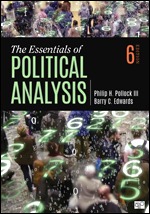📝 Print Features: Learning Objectives | Exercises | Key Terms
🛡️ Ancillaries: Test Bank* | Presentation Slides* | Solutions Manual*
💻 Practice Proposing Explanations, Framing Hypotheses & Making Comparisons with
R |
Stata |
SPPS |
Excel* = for instructors, available via Sage
 Request Free Instructor Copy from Sage Publishing
Request Free Instructor Copy from Sage Publishing





